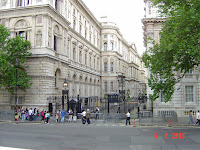
Henry IV of France (1553-1610) is said to be one of the most gifted monarchs of France. Henry was a cruel man, flogging his own children even, but was also athlete, and loved hunting and playing tennis. Henry was also very brave, leading his troops into battle personally, but was also a politically clever, and was able to lead France into an impressive recovery after 30 years of religious wars. Henry was baptized as a Catholic when he was a child, but he was raised as a Protestant by his mother. His mother, Jeanne d'Albert, had already declared Calvinism as the religion of Navarre, a small kingdom in the Pyrenees mountains. When he was only a teenager, Henry left the capitol of Navarre, known as Pau, and joined the Huguenot forces in the French Wars of Religion, and fought with the Prince of Conde and Admiral Coligny. It was in 1572 that Henry became King Henry III of Navarre, when his mother died. In an attempt to end the religious fighting, Henry married the sister of Charles IX of France, but Catherine de' Medici and her Catholic supporters, led by the Duke of Guise, also named Henry, had no intention of letting the marriage last. Six days after the wedding, on St. Bartholomew's Day, the royal family authorized a huge burst of violence against the Protestant community, which led to the massacring of thousands of French Huguenots. Henry of Navarre only escaped by pretending to convert to Roman Catholicism, but after escaping prison in January of 1576, Henry renounced his conversion and rejoined the Protestant armies. In 1584, Francis, Duke of An
 jou and Alençon, heir and brother of Henry III, current king of France, died, leaving Henry of Navarre as the legal heir to the French throne. Because Salic Law disinherited any who claimed the throne by the female line, Henry of Navarre was the closest heir, being that he was directly descended on the male line from King Louis IX, who died in 1270. Because of this, Henry of Navarre took the thrown when Henry III was assassinated in 1589, and was the first Bourbon king of France. When he became king, Henry IV renounced his Protestant faith in view of Catholicism. He was crowned as king the next month. In 1595, Henry declared war on Spain, and a year later, allied with the English and the Dutch against the Spanish. When the Spanish treasury ran out of money, negations began. On the 30th of April in 1598, Henry issued the Edict of Nantes, which guaranteed limited toleration to the French Protestant communities. Two days later, peace was made and all Spanish troops were withdrawn from French and Dutch territories. Henry's recovery program for France was bold and imaginative, but it worked. When Henry IV died in 1610, France was in a great condition. Swampland was drained to make room for agricultural areas and tree-lined roads, bridges, and canals were built, and the Louvre was extended. Henry wisely tried to subsidize land rather than wage war, but found himself at the brink of war with the Holy Roman Empire. While riding to meet his armies on May 14th of 1610, François Ravaillac, a fanatical anti-Huguenot, rejected by the Jesuits, stabbed Henry to death. When he was tortured, Ravaillac said that he worked alone to stop Henry from declaring war on the Pope, but no one will know if he really worked alone or not. If Henry had lived longer, war would have been made, but France might have gone into a golden age as well.
jou and Alençon, heir and brother of Henry III, current king of France, died, leaving Henry of Navarre as the legal heir to the French throne. Because Salic Law disinherited any who claimed the throne by the female line, Henry of Navarre was the closest heir, being that he was directly descended on the male line from King Louis IX, who died in 1270. Because of this, Henry of Navarre took the thrown when Henry III was assassinated in 1589, and was the first Bourbon king of France. When he became king, Henry IV renounced his Protestant faith in view of Catholicism. He was crowned as king the next month. In 1595, Henry declared war on Spain, and a year later, allied with the English and the Dutch against the Spanish. When the Spanish treasury ran out of money, negations began. On the 30th of April in 1598, Henry issued the Edict of Nantes, which guaranteed limited toleration to the French Protestant communities. Two days later, peace was made and all Spanish troops were withdrawn from French and Dutch territories. Henry's recovery program for France was bold and imaginative, but it worked. When Henry IV died in 1610, France was in a great condition. Swampland was drained to make room for agricultural areas and tree-lined roads, bridges, and canals were built, and the Louvre was extended. Henry wisely tried to subsidize land rather than wage war, but found himself at the brink of war with the Holy Roman Empire. While riding to meet his armies on May 14th of 1610, François Ravaillac, a fanatical anti-Huguenot, rejected by the Jesuits, stabbed Henry to death. When he was tortured, Ravaillac said that he worked alone to stop Henry from declaring war on the Pope, but no one will know if he really worked alone or not. If Henry had lived longer, war would have been made, but France might have gone into a golden age as well.






